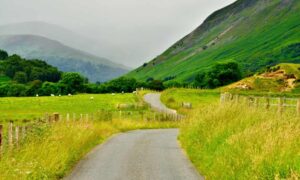
Land ownership in Scotland has become even more concentrated despite two decades of land reform legislation, with green capital investors becoming increasingly dominant, a study has found.
Andy Wightman, the land reform campaigner who published a groundbreaking look at Scottish land distribution in 2012, has calculated that half of all privately owned rural land in Scotland, or 3.2m hectares (7.9m acres), is held by just 433 people and companies, with only 2.76% of rural Scotland held by community groups.
His analysis shows that hereditary peers own less land than previously, while the number of private investors who specialise in financially lucrative “green capital” schemes to create forestry and peat restoration projects has surged.
Scotland’s third largest landowner is Gresham House, an investment firm taken over recently by the US private equity firm Searchlight Capital; Wightman’s detailed analysis of Land Registry records has established it owns 53,775 hectares across 161 separate holdings.
The Duke of Buccleuch, who was Scotland’s largest private landowner when Wightman did his last survey in 2012, has been voluntarily selling land to local residents, yet is still second, holding 66,345 hectares, 32% less than in 2012.
Buccleuch Estates has been supplanted as Scotland’s largest landowner by Anders Povlsen, the Danish Asos mail order billionaire, who owns 88,296 hectares spread across 12 estates; his Highland empire has grown by 37% since 2012.
Povlsen is one of a number of extremely wealthy Scandinavians buying up Highland estates, including Strathconon Estates Ltd (previously known as Kirkbi Estates Ltd), an arm of the philanthropic investment firm owned by the family of the Lego heir Kirk Kristiansen.
Wightman calculates that the estate at Strathconon near Inverness has grown to 36,933 hectares, making Kirkbi Scotland’s ninth largest private land owner. Kirkbi believes its holdings to be slightly smaller, at approximately 34,500 hectares.
Wightman’s data has come from records held by Registers of Scotland, the official land register, and more accurate land mass data from Ordnance Survey. That has allowed him to recalculate the figures he originally published in 2012 in his book The Poor Had No Lawyers. Modern records show that 440 owners owned half of Scotland’s private land in 2012, not the 432 he originally reported.
Wightman and other land campaigners argue the latest data is evidence that the Scottish parliament’s attempts to empower community buyouts to diversify rural landownership has failed, despite enacting several laws to strengthen right to buy laws and asset transfers.
